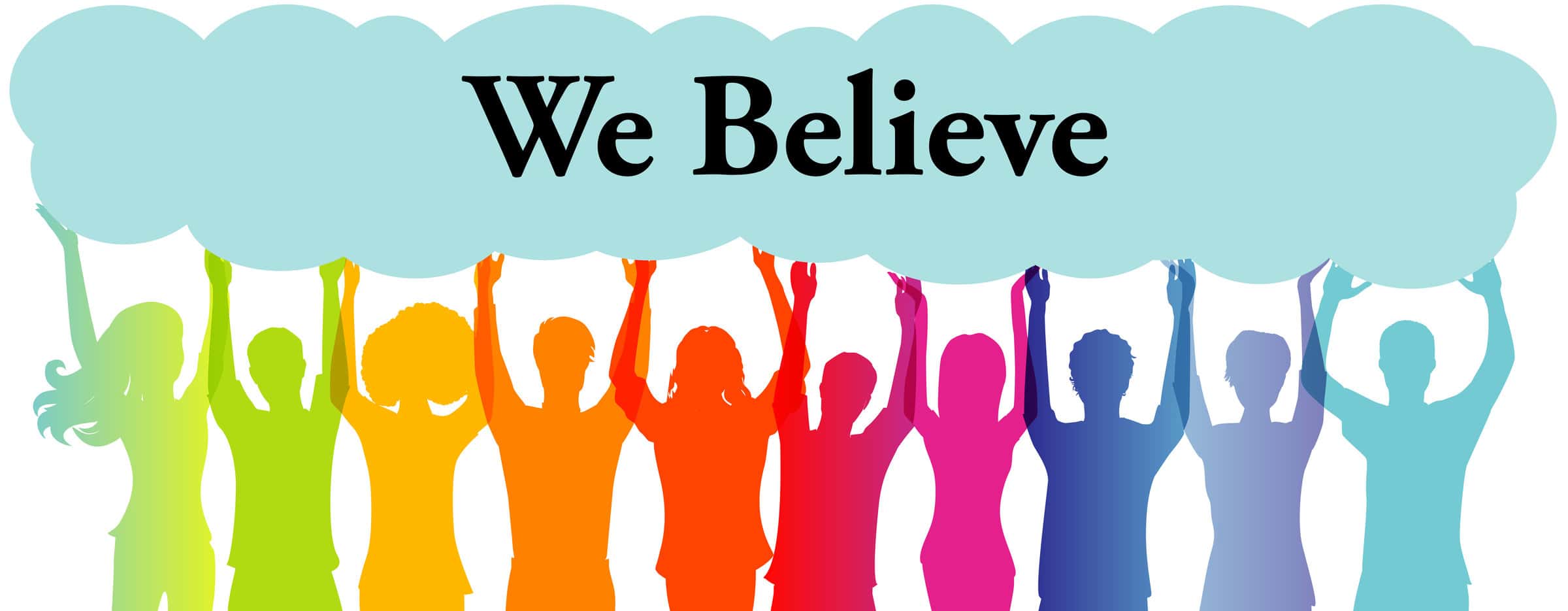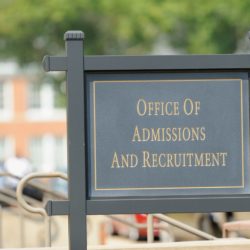By Jill Dalby PhD, CPCC, Certified Professional Executive Coach, Maroon Creek Coaching LLC
As independent educational consultants (IECs) dedicated to helping students choose the best path to foster academic and social growth, what would you do if you learned that half of your students may not be well served by any of the schools or colleges you are recommending? It sounds absurd, but abundant evidence exists that success in school fails to translate directly into success at work for girls and women. Carol Dweck, Stanford University psychology professor and author of Mindset, summed it up: “If life were one long grade school, women would be the undisputed rulers of the world. But life isn’t one long grade school.”
Girls are better students and better educated than their male counterparts, but they aren’t learning the breakthrough leadership skills they need to be successful in the workforce. In the classroom, they are rewarded for getting it right, being prepared, and conforming to expectations. But girls are not rewarded for taking risks, standing out, thinking on their feet, or making unpopular decisions—all important leadership behaviors.
Understanding what gets in the way of women’s empowerment is a responsibility we all share and doing something about it is our collective obligation. Although there are many ways to steward change, one way to make a difference is to become aware of the ways in which girls and women give away their power and then do something about it. I hope you find the suggestions below, which I originally presented at the IECA 2018 Fall Conference in Los Angeles, to be useful.
Communication Patterns
Women and girls walk the line between saying what they think with clarity and directness and adhering to feminine norms around communication. They have learned that what’s at risk is being heard, feeling valued, and having influence. Consequently, they have adopted habits to get their messages across gently. They hedge by using such words as just, kind of, and almost and qualify their ideas by saying “I’m no expert but…” They may even unknowingly demure by sitting in chairs on the room’s perimeter rather than at the table.
But when women and girls come across as tentative and unsure, they are giving up their power and undermining their message. By helping students recognize when they are using ineffective communication patterns and offering them alternatives to use when it’s wise for them to do so, you help them present themselves as strong, credible, worthy communicators one word at a time.
Be Likable, Then Be Competent
It’s important that girls and women understand the value of making strategic choices about when, where, and with how much strength to communicate. Psychologists Amy Cuddy, Susan Fiske, and Peter Glick have shown that humans are hardwired for safety and connection. When encountering a stranger, we quickly first want to know if the person is friend or foe and only then do we assess their competence.
Our assessments of competence are slow to change while judgments of friendliness and trustworthiness are easily modified. Further, an unfamiliar person is seen as both warm and competent only when they come from a “high-status” group. Others, such as girls and women, are seen as being either warm or competent, but not both. So, when women and girls begin a conversation with an explanation of their competence and effectiveness before establishing a connection, they can be perceived as being defensive and compensatory.
Use this information to help girls and women understand how to walk the fine line while working to change it. Let all your students know why it’s crucial to create connection and engagement at the beginning of an encounter before discussing skills and abilities and about the cognitive biases formed against low-status groups. Information is power—for you and for the students you serve. By understanding what’s behind the tradeoffs, you can help girls shed ineffective communication habits without setting them up to fail in those environments that aren’t ready for a woman who will adapt her style but won’t compromise her value in order to be heard.
Hiding Strategies
Girls and women are really good at using hiding strategies to mask procrastination and relieve anxious “I’m not ready yet” feelings. Expressed as the tendency to overcomplicate a process, endlessly polish an outcome, curate everyone else’s ideas except her own, and omit her story from the narrative, hiding strategies appear to be important tasks but really keep girls and women playing small because the underlying behaviors don’t produce the forward momentum that catapults them into the spotlight.
Help your students see when they’re making choices that keep them safe but far from centerstage, and then invite them to approach things differently. If they tend to work in isolation, suggest that they tell their friends what they wish to accomplish and ask for feedback. Or explain the benefit of efficiency that comes from sharing an early draft version. If they tend to overcomplicate and overpolish, model clarity and simplicity. And finally, empathically discuss the cost of perfection. As Lisa Damour, clinical psychologist and author of Untangled, pointed out, “We need to remind girls that when any score above 90 counts as an A, the difference between a 91 and 100 is a life.” In your work as IECs, you have the chance to help girls believe in themselves and change their self-limiting behaviors.
Unhealthy Attachments to Praise and Criticism
To know we matter is a fundamental human desire. Rather than looking inward for self-assurance, though, many seek external validation to find their identity and worth. More so than men, women tend to seek outward approval to feel acceptable, worthy, and capable. At the same time, they avoid criticism for fear of feeling unacceptable, unworthy, and incapable. This unhealthy attachment to praise and criticism is another way that girls and women give away their power.
Because strong, capable women seek out feedback and meet with their critics, help reframe your students’ perspective on feedback. Teach them it is an opportunity to learn what others expect; it is not a reflection of worth or intelligence. In doing so, you will support your students to unhook from praise and criticism while growing a healthy self-regard from the inside out.
Fear
We humans are hardwired to attend to our feeling of fear because it protects us from harm—getting eaten by the sabre tooth tiger or falling off the cliff. It motivates us to practice again so that we’re ready for the performance. And it signals a desire to stretch out of a comfort zone in search of our potential. But when healthy fear gets supplanted by imaginary beasts like failure, rejection, and even success, we get hijacked by paralyzing fears and our power is diminished.
Other fears disempower too. Women’s fear of conflict sabotages leadership potential. And women who unnecessarily share their successes with others or use the “royal we” for fear of standing out or appearing selfish, squash their opportunities for recognition and advancement.
When fears remain unexplored, “stuckness” happens, but fears that are faced and overcome become sources of power. The first step is to identify the type of fear that is being experienced and then get curious about it. What is good about it? What is bad about it? What is to be done about it? Supporting girls and women to work with fear rather than against it is crucial to their empowerment because when they triumph over fear, they are emboldened to do more and to be more.
Self-Doubt
Women are ruminators. They are more likely than men to replay what went wrong and to believe they’re at fault. While men tend to get angry, blame others, and move on, women listen to the voice in their head that repeatedly questions and castigates. What ensues is an inner dialogue characterized by self-doubt and feelings of inadequacy. For women, this voice of the inner critic is often the loudest and when that voice speaks, power is silenced.
By encouraging girls to recognize the voice of their inner critic, you help them neutralize its impact. When you suspect a student’s loud and mean voice of self-doubt is talking, ask her to notice it and talk back to it kindly. Teach her to separate herself from the inner critic by giving it a name and distinct characteristics. When it shows up, say: “That doesn’t sound like you. That sounds like your inner critic. Why don’t you tell it ‘Thanks, but no thanks, not today.’” Invite it to go sit in the other room or turn down its volume.
After her inner critic has left them room, call on her inner mentor to come out. That is the voice inside her that wants the best for her always. It speaks in a peaceful, quiet voice from a place of wisdom, love, and guidance. It’s our true north. It’s our mindful self. By helping girls and women identify the many active voices talking at one time, you allow them to overcome the inner critic’s need to keep them playing small and you support a lifelong empowerment process.
These are only a few of the patterned behaviors and socialized processes that disempower women and girls. But it doesn’t have to be this way. Just as Dr. Seuss’s Once-ler made his passionate appeal at The Lorax’s end, I say to you: “Unless someone cares a whole awful lot, nothing is going to get better, it’s not.”
Change happens one person at a time through insight and action. Empowered voices can work together to create systemic change. Whether you change your own actions to model a more empowered approach to life, incorporate these new insights when advising students, or explore ways your own actions may be inadvertently disempowering others, find novel ways to enhance your practices and change your behaviors while simultaneously helping women succeed in the long run, not just the short run. Because if you don’t, who will?
Additional Reading
Sally Helgesen and Marshall Goldsmith, How Women Rise: Break the 12 Habits Holding You Back From Your Next Raise, Promotion, Or Job. Hachette Book Group, New York, 2018.
Katty Kay and Claire Shipman, The Confidence Code: The Science and Art of Self-Assurance, What Women Should Know. Harper Collins, New York, 2014
Tara Mohr, Playing Big: Practical Wisdom for Women Who Want to Speak Up, Create and Lead, Penguin Random House, New York, 2014.
Amy Morin, 13 Things Mentally Strong People Don’t Do: Take Back Your Power, Embrace Change, Face Your Fears, and Train Your Brain for Happiness and Success. Harper Collins, New York, 2017.










